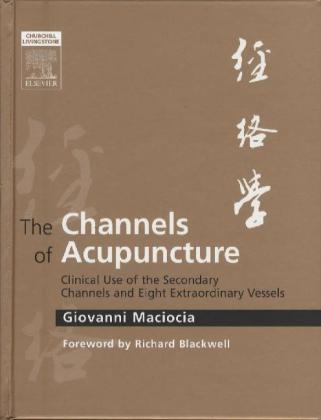Read more
Informationen zum Autor Giovanni Maciocia is one of the most highly-regarded and respected authors and lecturers in the West. He is Visiting Associate Professor at the Nanjing University of Traditional Chinese Medicine and has many years of experience in teaching and practice. Giovanni trained initially in the UK and then in China, learned Chinese to be able to study from original Chinese texts, and was one of the first practitioners and authors to introduce Chinese medicine in a clear and accessible way to a Western student audience. Giovanni Maciocia has written other best-selling books under the Elsevier Churchill Livingstone imprint - The Practice of Chinese Medicine: The Treatment of Diseases with Acupuncture and Chinese Herbs, 2e (ISBN 978-0443074905), Diagnosis in Chinese Medicine: A Comprehensive Guide, 1e (ISBN 9780443064487), The Channels of Acupuncture: Clinical Use of the Secondary Channels and Eight Extraordinary Vessels, 1e (ISBN 9780443074912), The Psyche in Chinese Medicine: Treatment of Emotional and Mental Disharmonies with Acupuncture and Chinese Herbs, 1e (ISBN 9780702029882), and Obstetrics and Gynecology in Chinese Medicine, 2e (ISBN 9780443104220). Klappentext One of the most highly regarded and respected authors and lecturers in the West examines the art of traditional Chinese acupuncture with this in-depth look at the secondary channels and other key structures encompassing the human body in Chinese anatomy, presenting comprehensive and clear information on an essential part of traditional Chinese medicine. Zusammenfassung Illuminates and examines the art of traditional Chinese acupuncture. This book offers an in-depth look at the secondary channels and other key structures encompassing the human body in Chinese anatomy. It describes in detail the pathways! pathology! diagnosis! and treatment of the Luo! Muscle! and Divergent secondary channels. Inhaltsverzeichnis PART 1 THE CHANNEL SYSTEM Chapter 1 CONCEPT OF "CHANNEL¿ IN CHINESE MEDICINE Chapter 2 MORPHOLOGY AND FLOW OF QI OF CHANNELS Chapter 3 THE MEMBRANES (HUANG), FAT TISSUE (GAO), THE CAVITIES AND TEXTURE (COU LI) AND THE TRIPLE BURNER CAVITIES Chapter 4 FUNCTIONS OF THE CHANNELS IN GENERAL Chapter 5 THE CHANNELS IN DIAGNOSIS PART 2 MAIN CHANNELS Chapter 6 PATHWAYS OF THE MAIN CHANNELS Chapter 7 CHANNEL SYMPTOMS Chapter 8 TREATMENT OF MAIN CHANNELS Chapter 9 THE FIVE TRANSPORTING (SHU) POINTS Chapter 10 CATEGORIES OF POINTS Chapter 11 THE COMBINATION OF ACUPUNCTURE POINTS PART 3 CONNECTING CHANNELS (LUO MAI) Chapter 12 MORPHOLOGY AND PATHWAYS OF CONNECTING CHANNELS Chapter 13 PHYSIOLOGY OF THE CONNECTING CHANNELS Chapter 14 AETIOLOGY AND DIAGNOSIS OF THE CONNECTING CHANNELS Chapter 15 PATHOLOGY OF CONNECTING CHANNELS Chapter 16 TREATMENT OF THE CONNECTING CHANNELS PART 4 MUSCLE CHANNELS (JING JIN) Chapter 17 MORPHOLOGY AND PATHWAYS OF THE MUSCLE CHANNELS Chapter 18 MUSCLE CHANNELS - FUNCTIONS AND AETIOLOGY Chapter 19 PATHOLOGY AND SYMPTOMS OF MUSCLE CHANNELS Chapter 20 TREATMENT OF MUSCLE CHANNELS PART 5 DIVERGENT CHANNELS (JING BIE) Chapter 21 MORPHOLOGY OF DIVERGENT CHANNELS Chapter 22 FUNCTIONS AND CLINICAL USE OF THE DIVERGENT CHANNELS PART 6 CUTANEOUS REGIONS Chapter 23 THE 12 CUTANEOUS REGIONS PART 7 EIGHT EXTRAORDINARY VESSELS Chapter 24 THE 8 EXTRAORDINARY VESSELS Chapter 25 CLINICAL USE OF THE EXTRAORDINARY VESSELS CHAPTER 26 GOVERNING VESSEL (DU MAI) Chapter 27 DIRECTING VESSEL (REN MAI) Chapter 28 PENETRATING VESSEL (CHONG MAI) Chapter 29 GIRDLE VESSEL (DAI MAI) Chapter 30 YIN STEPPING VESSEL (YIN QIAO MAI)...

